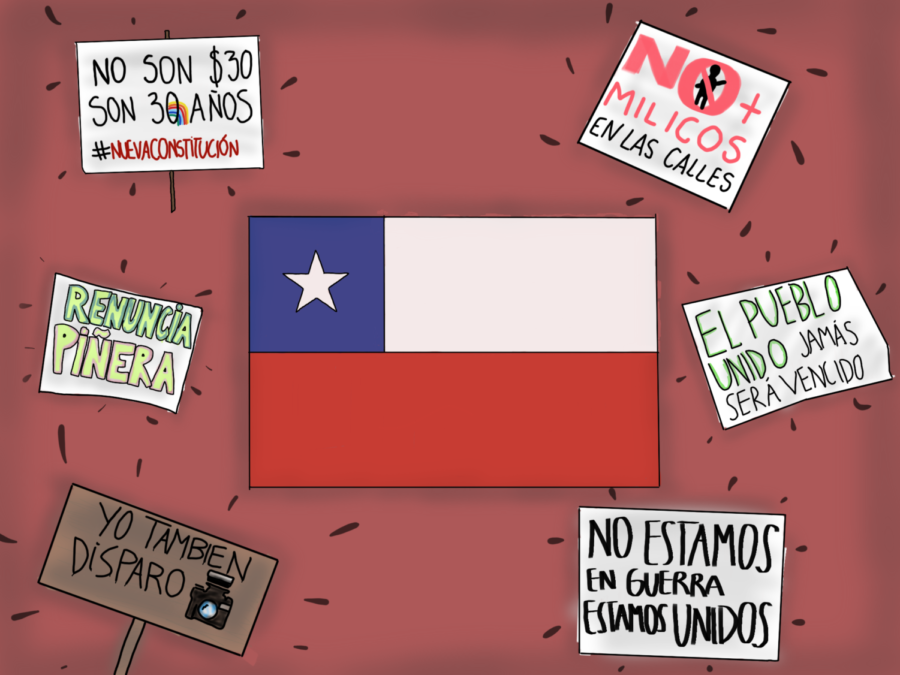Protests in Chile: The Movement to End Economic and Social Inequality
December 20, 2019
Chile is home to the largest amount of coastline in South America, prolific artists and writers, and a United-States-fueled military dictatorship. From 1973 to 1990, the country was under the control of Agosto Pinochet, who seized control of the state after a military coup funded by the communist-fearing US. The country was originally being governed by Salvador Allende, a man with socialist views on policy. As a result of the Cold War tensions and the United States’ containment policies on the worldwide eradication of communism, any socialist government was viewed as a threat to democracy.
The constitution that was drafted during Pinochet’s military dictatorship is the one modern Chile is still using in order to govern its country. This brings us to the root of the problem: a democratic country is using a constitution that was created during a time of fear and restraint that shackled the people to lives of misery. While the dictatorship has ended and freedom has been returned to the people, there are still widespread inequality and social problems plaguing the country.
What exactly triggered the most sustained protest Chile has ever seen since the dictatorship? A 4-cent hike in the subway fare. While this seems like a dramatic reaction to a simple boost in the metro fare, the underlying issues of inequality, lack of access to proper healthcare, low pensions, a lackluster education system and more are causing the public uproar. At first, authorities figured the increase in price would not cause such a stir. But, as a result, Pinera, the current Chilean president, did not scrap the policy in time and has been playing catch up ever since. The complete rejection of the rise in metro prices was admittedly unexpected, seeing as Chile was considered one of the most stable and wealthy countries in Latin America, despite the disparities.
The protests were originally started by students, and videos from their protests inside the subway stations of the capital city, Santiago, spread rapidly around social media platforms like Twitter. To us Americans, a 4-cent hike seems like a small annoyance, but to someone earning 4 dollars a day, paying 4 more cents for transportation can put a big dent in their income.
As a result of the protests, military officers began to roam the streets and attempt to dissolve the protests, a concept that had not been seen since the military dictatorship. The citizens who lived through the dictatorships are fearful of the devolution of Chile and the return of the environment Pinochet created. The use of force and violence by the government to quickly quiet the voices of the citizens protesting has led to thousands upon thousands of people injured, arrested, and killed. The protests allowed for the momentum of drafting a new constitution and creation of better social policies as an attempt to solve some of the country’s problems. However, there is no clear solution to the whole situation and this will be a hard few months for the Chilean people as they continue to advocate for the establishment of a better Chile.






























